Safety first
Heading out on the mountain in winter means dealing with snow and related dangers, including avalanches. Proper planning like knowing your route and checking the weather forecast regularly is vital, as is having the right equipment (and knowing how to use it) in case something goes wrong.
- Author: Enrico Mosetti
- Photographer: Michele Guarneri
Safety is one of the biggest concerns for those new to the world of ski touring. The thought of adding more devices to the equipment you’ve just bought, especially ones that you need to learn how to use properly by taking a course, like an avalanche transceiver, is a daunting one. One that has stopped many skiers from going beyond fitness touring, at least at first.
And it’s undeniable that the choice of the transceiver, shovel and probe set comes second to that of your ski touring setup of skis, boots and bindings. But there are no trade-offs to be made when it comes to safety. Which is why, as well as buying suitable devices (including airbag packs, which are increasingly considered important, even among die-hard traditionalists) it’s essential to know how to use them properly as well as practice and stay up to date. That avalanche barreling down on you won’t know if you’re an expert, and in the unfortunate event of an emergency situation, emotions and communication issues tend to take over and need to be dealt with effectively.
While probes and shovels haven’t undergone any dramatic changes in the last few years, two seasons ago the transceiver market was turned on its head when the Diract Voice by Ortovox burst onto the scene, the first beacon with voice navigation. Rumors of an interference-proof Pieps device have been doing the rounds for a few seasons now, but up to now they’re just gossip (electromagnetic fields generated by smartphones and watches as well as cameras is one of the biggest problems for devices like these).
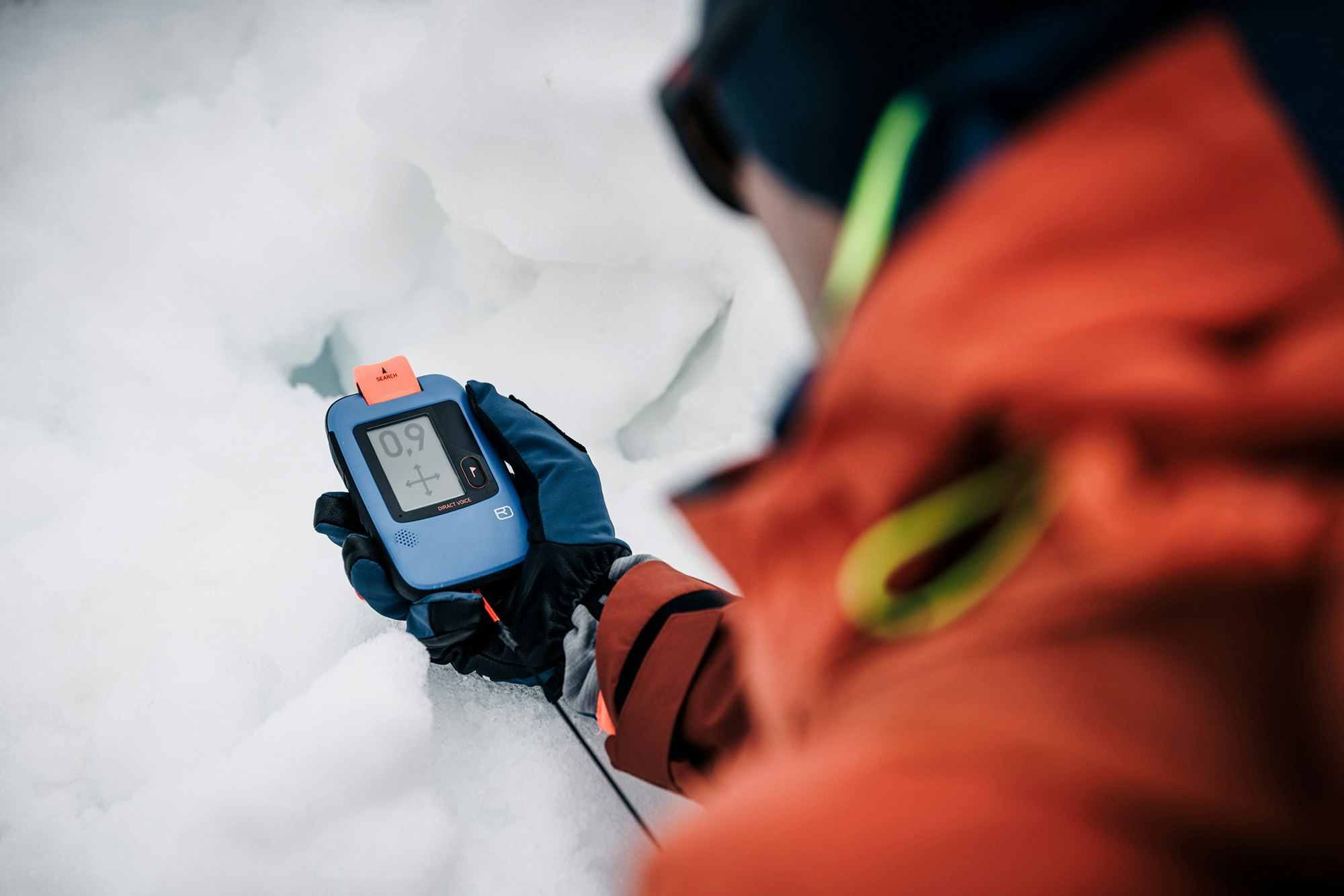
The most dynamic sector is airbag backpacks, which are increasingly considered important accessories not only for freeriders, but also ski mountaineers. This is thanks in part to the introduction of lighter models, like the Patrol UL E2 25 by Scott or the Avabag Litric Zero 27 by Ortovox, under two kilos (4.4 lbs.), or even the Airbag Tour 28 UL by Arva, weighing in at 1.6 kilos (3.5 lbs.). The real battle, however, is between systems; traditional airbags using a gas canister are better established than electric models. That said, most brands now offer an electric model, including ABS, the inventor of the airbag pack. Only Arva and Mammut haven’t gone electric yet. There’s also some serious competition in terms of pricing, with retailer Decathlon launching its own model with Alpride canister system (not tested). Further proof of how airbags are gaining in popularity.
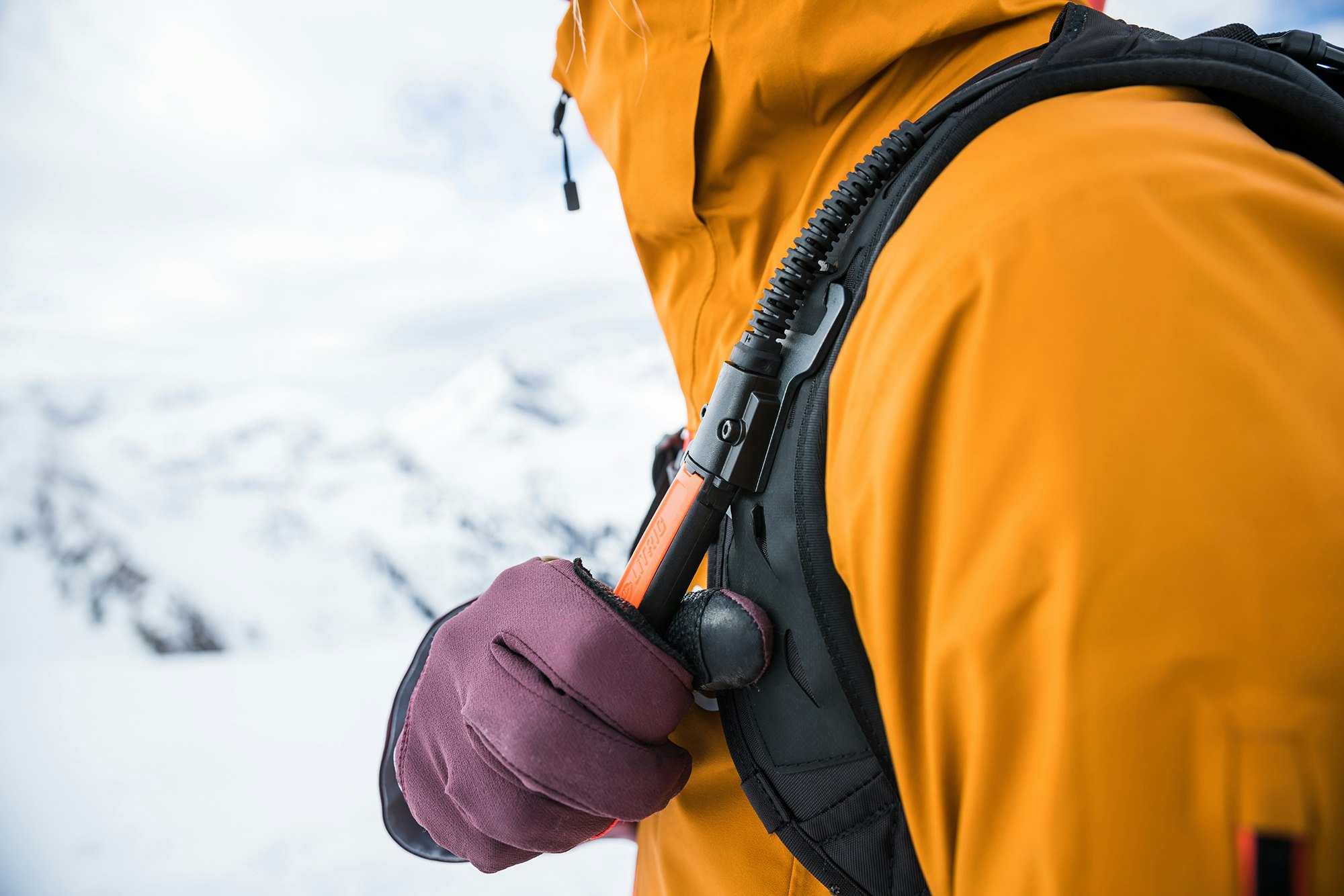
Airbag backpacks: the war of the worlds
So you’ve decided to buy an airbag pack. First you need to choose between a more traditional canister system or a new generation electric model with fan.
In the traditional system, pulling the trigger handle on the shoulder strap opens a canister of compressed air or gas (like nitrogen) that inflates the airbag. ABS packs have a slightly more complex mechanism that uses a pyrotechnic process to pierce the canister. Electric airbags, on the other hand, are inflated by a fan. The fan is operated by two systems, a powerful lithium-ion battery or a supercapacitor powered by lithium or regular batteries, able to store enough energy to inflate the airbag in just a few seconds. In both cases, however, it’s charged via USB. The first electric systems (Jetforce by Black Diamond and Pieps) use a powerful lithium ion battery (the one by Voltair is 82.2 Wh, while the Jetforce varies between 43.2 and 57.6 Wh) to guarantee more than one inflation, even in sub-zero temperatures.
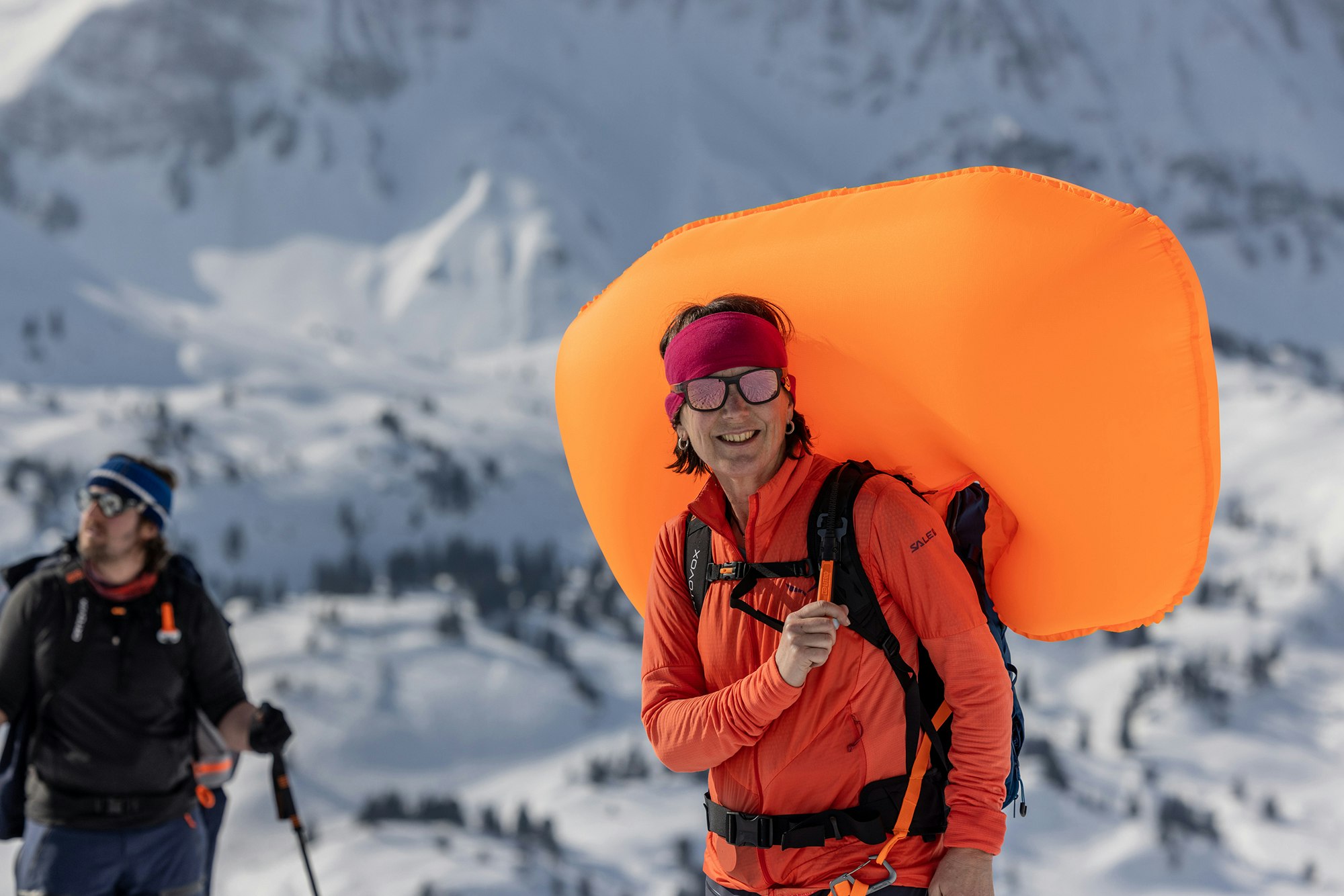
There are two: Alpride, which doesn’t use lithium ion batteries, rather two AAs (which mean you can charge it without relying on mains electricity, and you don’t have to worry about it losing charge over time) and Litric by Ortovox and Arc’teryx, which uses a 7.4 Wh lithium ion battery. The Alpride system is used by lots of brands. So which one should you go for? There are a few factors to consider, but electric packs are having a moment right now. On the plus side they can inflate multiple times (for training purposes, in case of a second avalanche, as a precautionary measure at dangerous sections) and can easily be taken on a plane. Regulations vary between Europe and the USA, but generally speaking the only limitations on electric models regard lithium ion batteries of up to 100 Wh, which in the US must be boarded in the cabin, and cannot be carried in the hold (international IATA regulations on the other hand do not impose restrictions). As for the canister system, in the US only empty canisters without an explosive charge can be transported by air, while IATA again imposes no restrictions, though it’s at the discretion of the airline whether to accept them, unlike with lithium ion batteries.
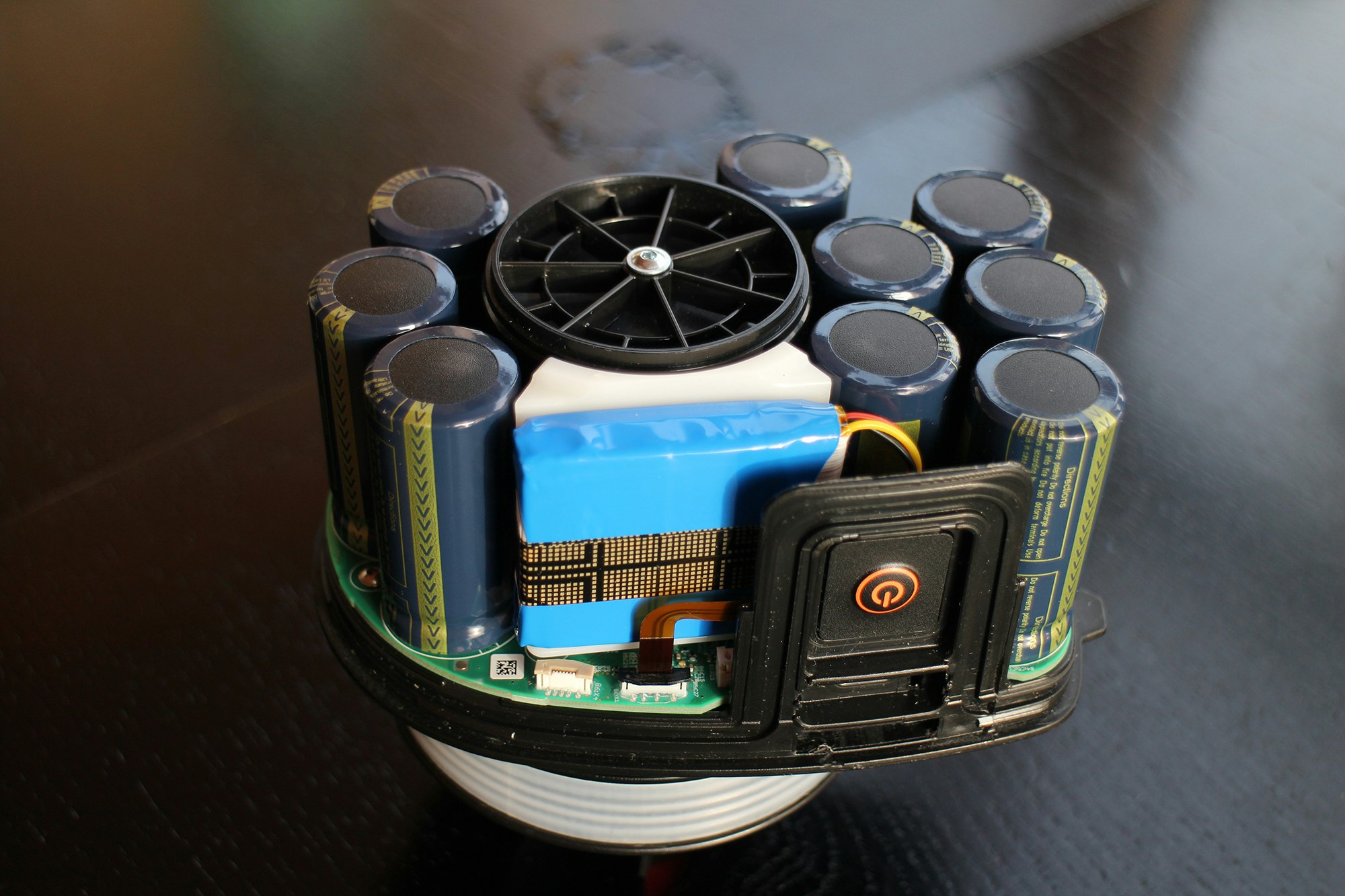
You also need to consider how to refill or change the canister, which is relatively easy where compressed air is concerned (there are a number of retailers; scuba diving shops can also offer this service), and a little more complicated with other types of gas. Alpride canisters are single use, while Ortovox Avabag cartridges can be refilled at a store or by the manufacturer. Arva doesn’t make electric airbags, and has always focused on the explosive force of the initial deployment over the total inflation time, as maximum pressure is needed immediately to counteract the force of the avalanche. According to the French brand’s research, their Reactor system releases 500 mbar of pressure in the first 0.33 seconds, and in any case over 300 mbar in the first 0.66 seconds, while their competitors start with under 300 mbar. In packs using the canister system, after the initial release the pressure decreases, while one of the two electric packs used for comparison has a similar, but more constant pattern of 200 mbar and the other is constant and lower than 100 mbar. Airbags sold in Europe must comply with regulation EN 16716 which covers different aspects, from the inflation time, to the time it must remain inflated, and the force range necessary to trigger the mechanism by pulling the handle.
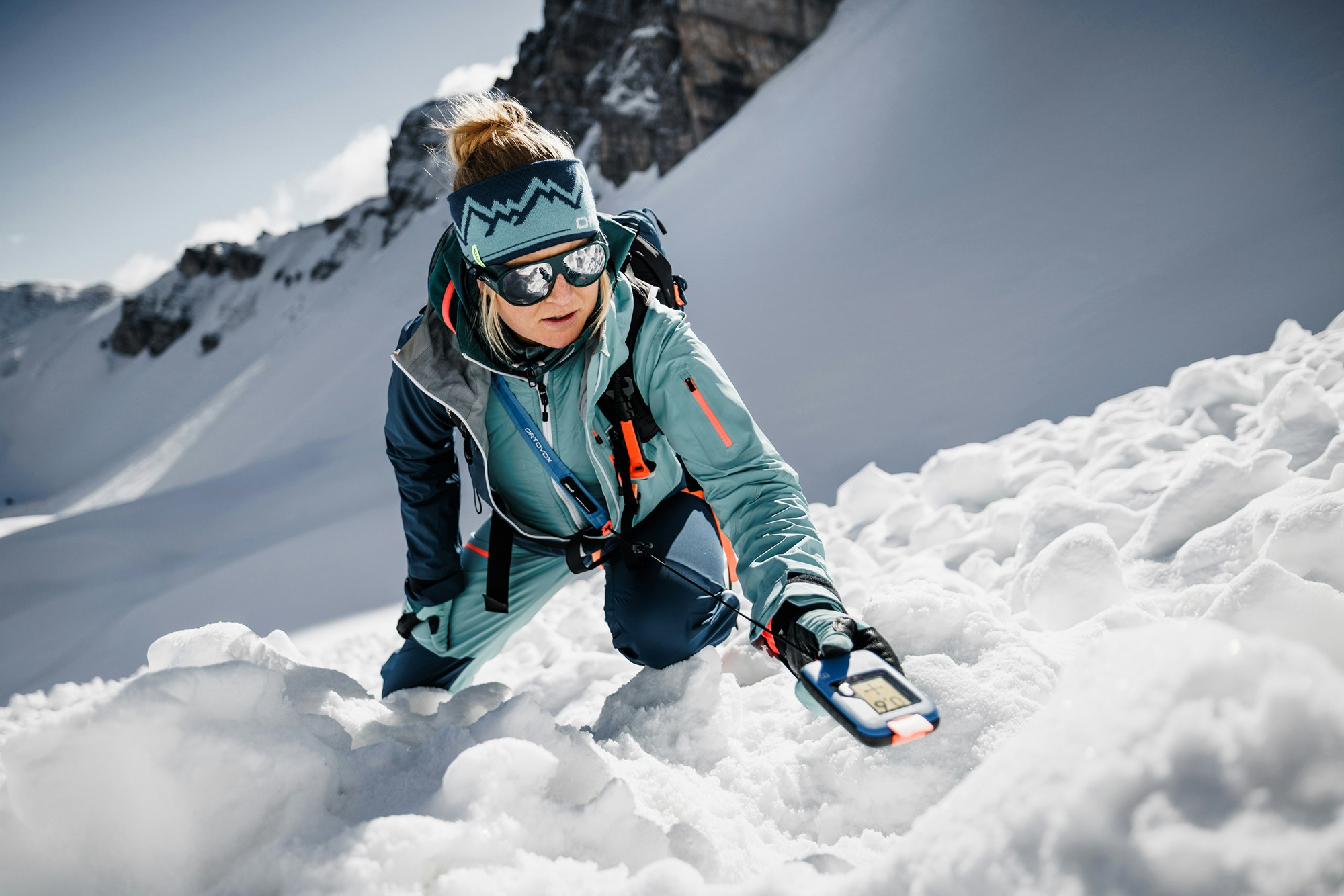
Avalanche transceivers: the simpler the better
As these devices are reliant on technology, they have undergone lots of changes over the years. The first transceivers were analog, and the radio signal was transmitted as an audible tone. Newer devices are digital.
Even the acoustic signal is no longer analog, but digital. Though there is a wide range of choice on the market, we recommend opting for a mid-range product. They offer all the functions necessary for beginners and those with more experience, and often even for the professionals. These days they all have three antennas, guaranteeing more precise location detection, regardless of which way the buried subject’s device is facing. There are a few features that we regard as essential. Firstly, a marking function in case of multiple burials. Then a group test function, a search-to-send button easy to use with gloves on (as well as auto-revert feature), readily available software updates, and a screen visible even through polarized sunglasses. Lastly a good harness to wear the device that lets to you move it away from your body (both to avoid interference from anything you may have in your pocket, and to have a good range in the third search phase, aka the fine search).
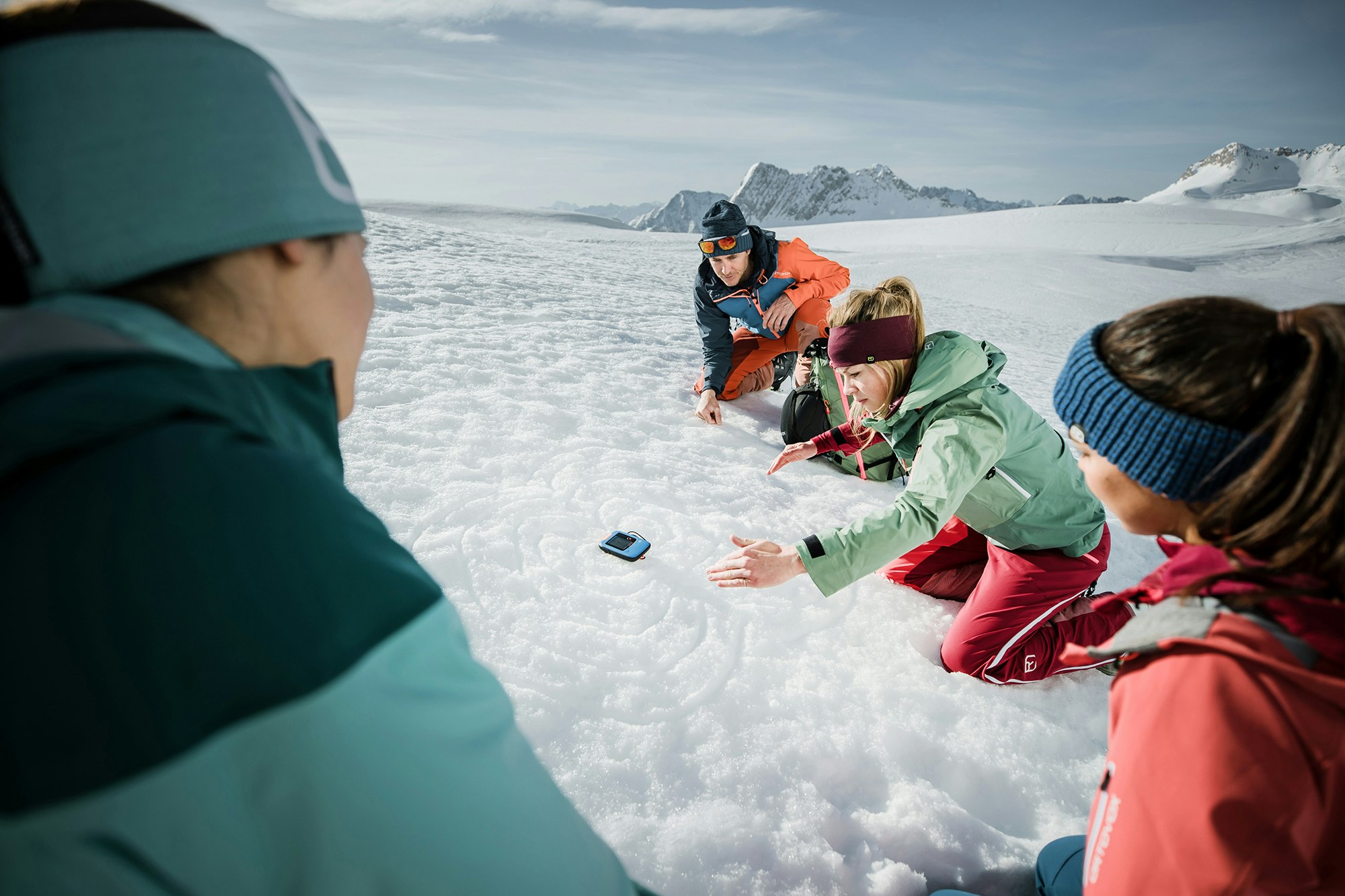
The auto-revert search-to-send function is useful not only to reset it to send if inadvertently set to search, but above all if you are caught in a second avalanche during search. Another important consideration is the interference from smartphones, GPS, watches, GoPros, LCD displays on cameras, and walkie-talkies. Transceivers should be kept at least 20 – 30 cms (8 – 12 in.) away from these devices, and during search at least 50 cms (1.5 feet). If you wear a watch, keep your transceiver on the opposite side of your body. Lastly, but no less importantly, remember that having the latest, most expensive model means nothing is the batteries are flat. As any expert in this area will tell you, for peace of mind your device should be at least 50% charged. It goes without saying that rechargeable batteries should not be used.
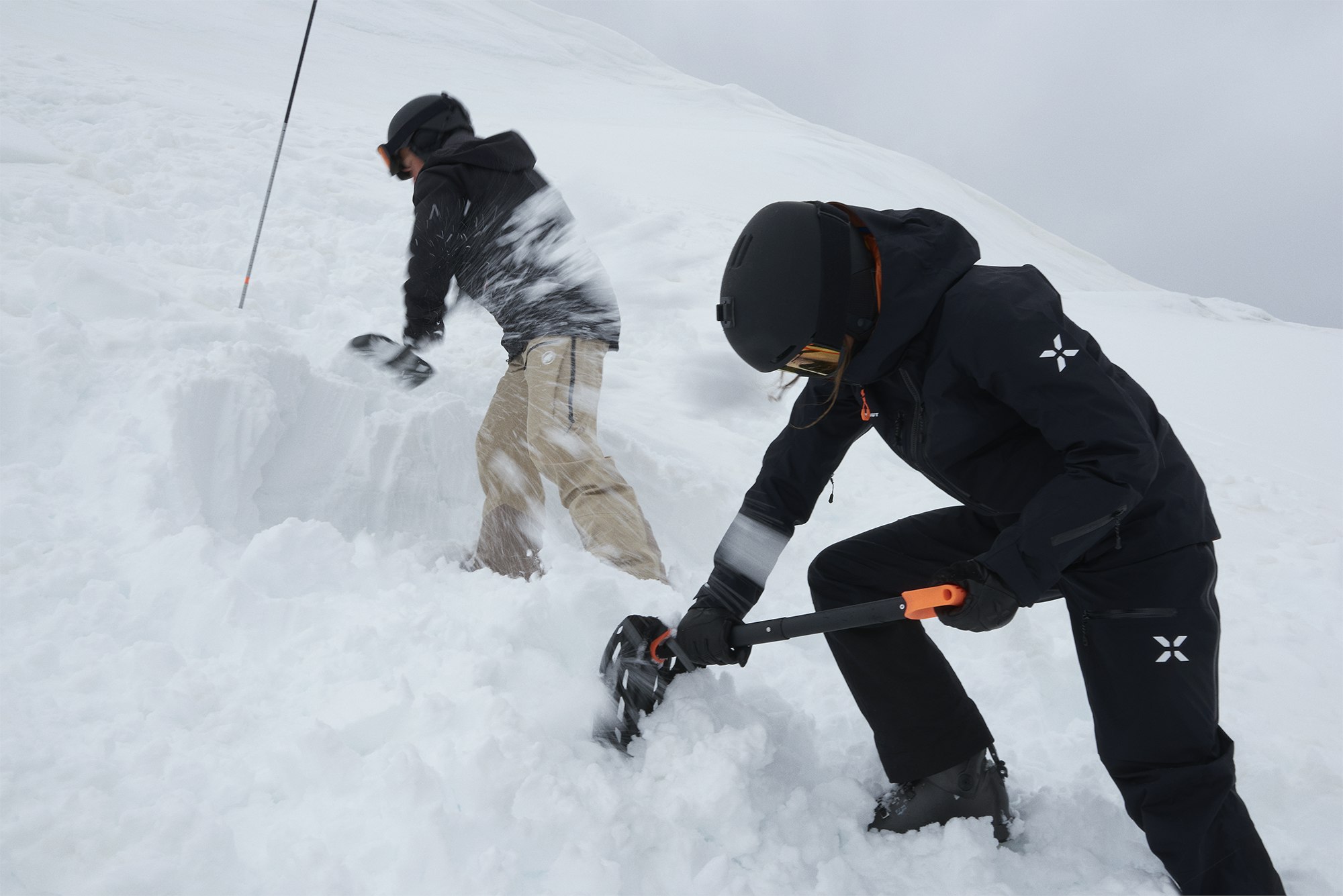
Probe: solid and reliable
Leave the ultralight models to racers; for tours and expeditions you need a solid, reliable product, even (in this case) at the cost of a little extra weight. Technology has also progressed in this field.
So, what makes a good probe? Quick assembly (throw and pull) with reliable, intuitive automatic-lock system; durable materials, even at low temperatures; cord in metal or Kevlar (not nylon); connection of the segments aided by a tapered plastic protector (which protects the cord and the female coupling); 2.40/2.60 m in length; easily legible depth markings; a spike slightly wider than the diameter of the shaft to aid probing and recognition of what the probe is touching. The iProbe II BT 260 model by Pieps is able to detect transceivers. It sends an acoustic signal at intervals and a flashing light if the buried transceiver is within 50 cm (1.5 feet) of the tip of the probe.
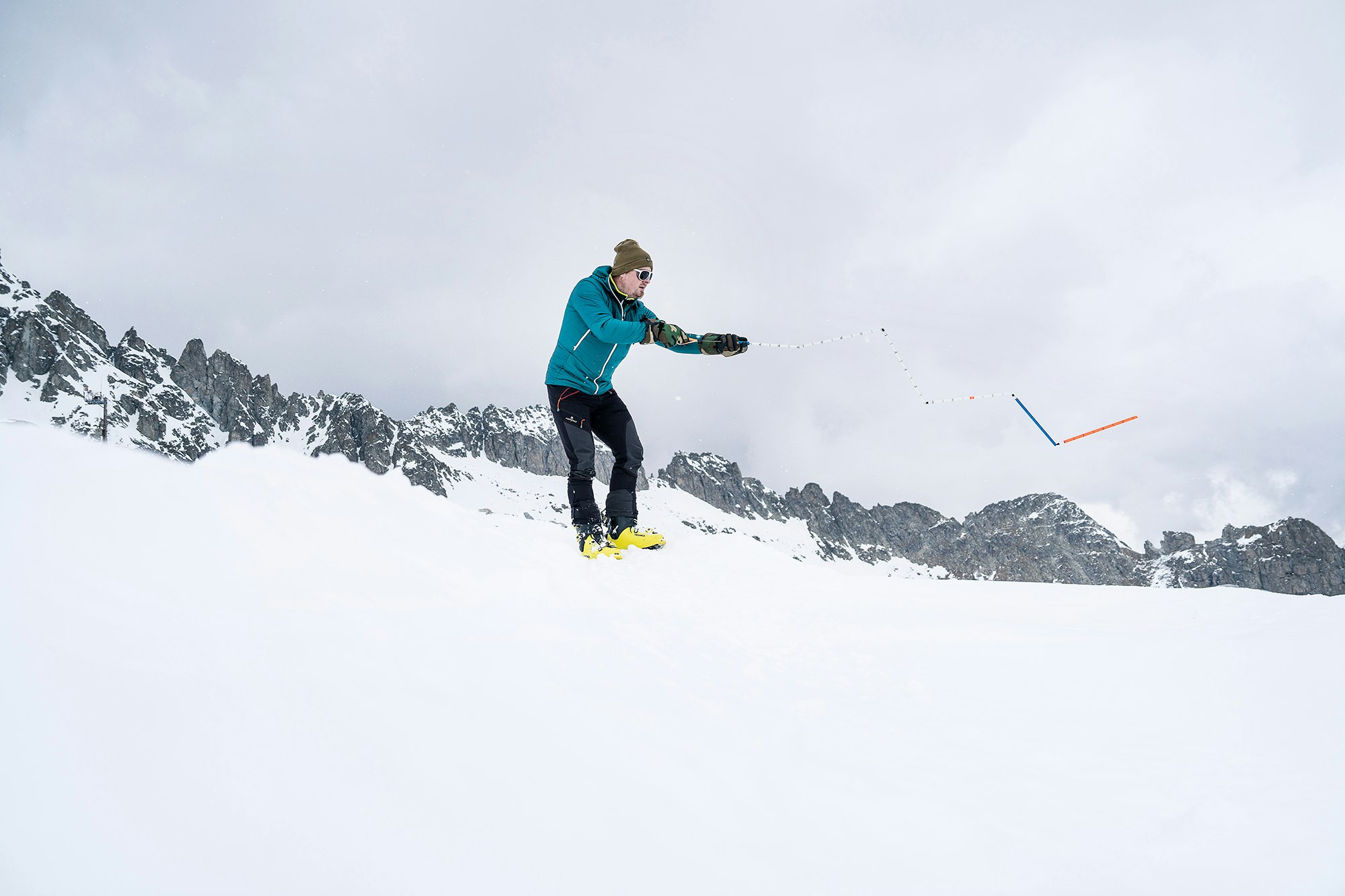
When within 30 cm of the probe it emits a constant beep and the light stays on, even if it misses the person buried, or you can’t tell if the soft mass is a person or part of the terrain, or that hard object is a ski boot or a rock. If the probe is within 30 cm of a Pieps transceiver, it can suppress it so that it doesn’t need to be marked, as the marking system can slow down the software of any transceiver.
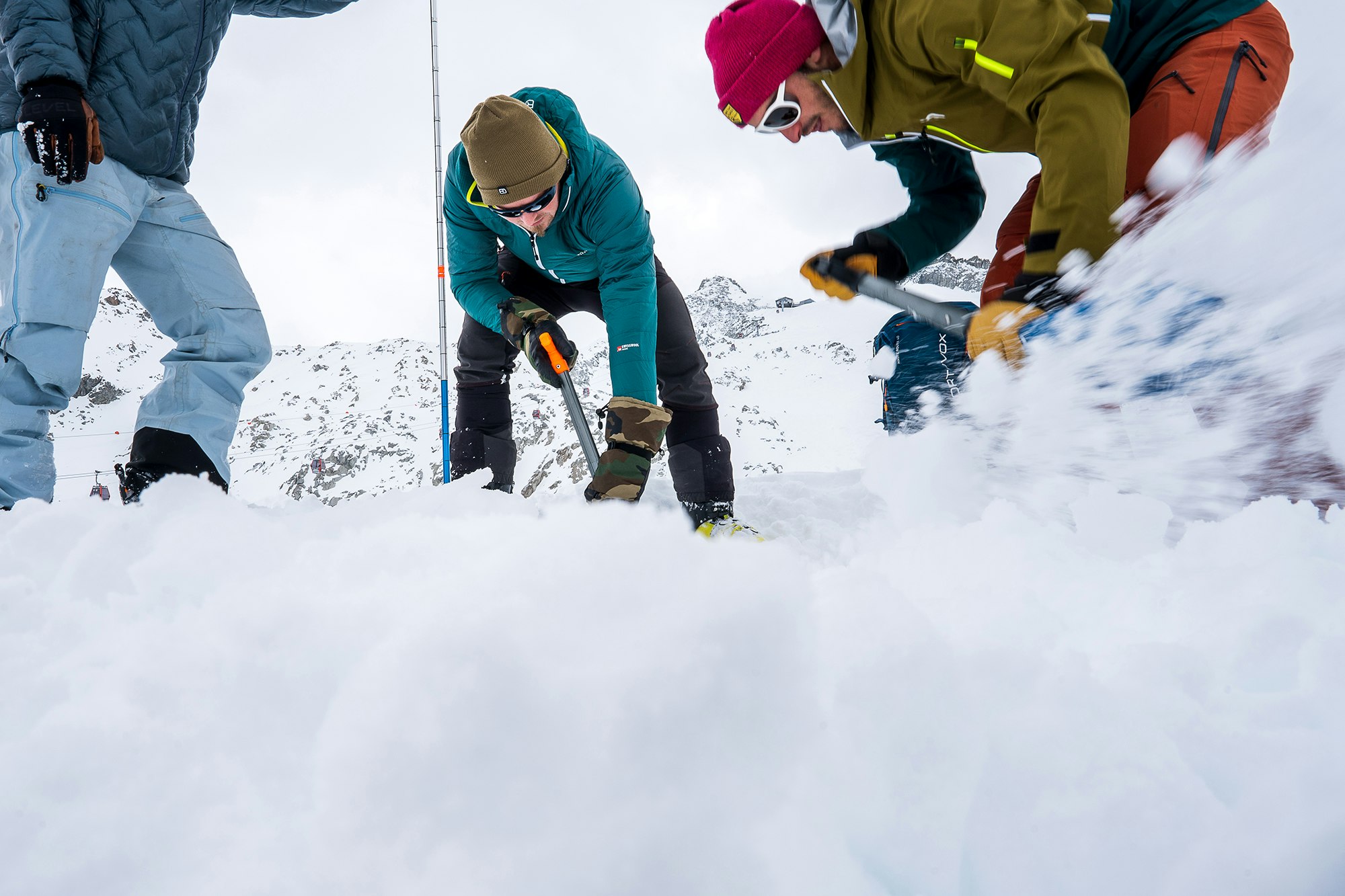
Shovel: the bigger and heavier, the better (within reason)
Our first bit of advice is to stay away from race models. Find one made from aluminum, which offers the right mix of weight, reliability and durability.
When it comes to the blade, other than size, look at how well it slices the snow, and where possible choose one that lets you use your feet to help dig. A T-shaped handle is the most common, but it’s a little unwieldy with mittens on. A good shovel is useful not only for digging out burial victims, it can also be used to analyze the quality of the snow, as well as build an emergency snow shelter or kicker. The components should be quick and easy to assemble even with gloves on. Take it apart in the store to see how much space it takes up in your pack.
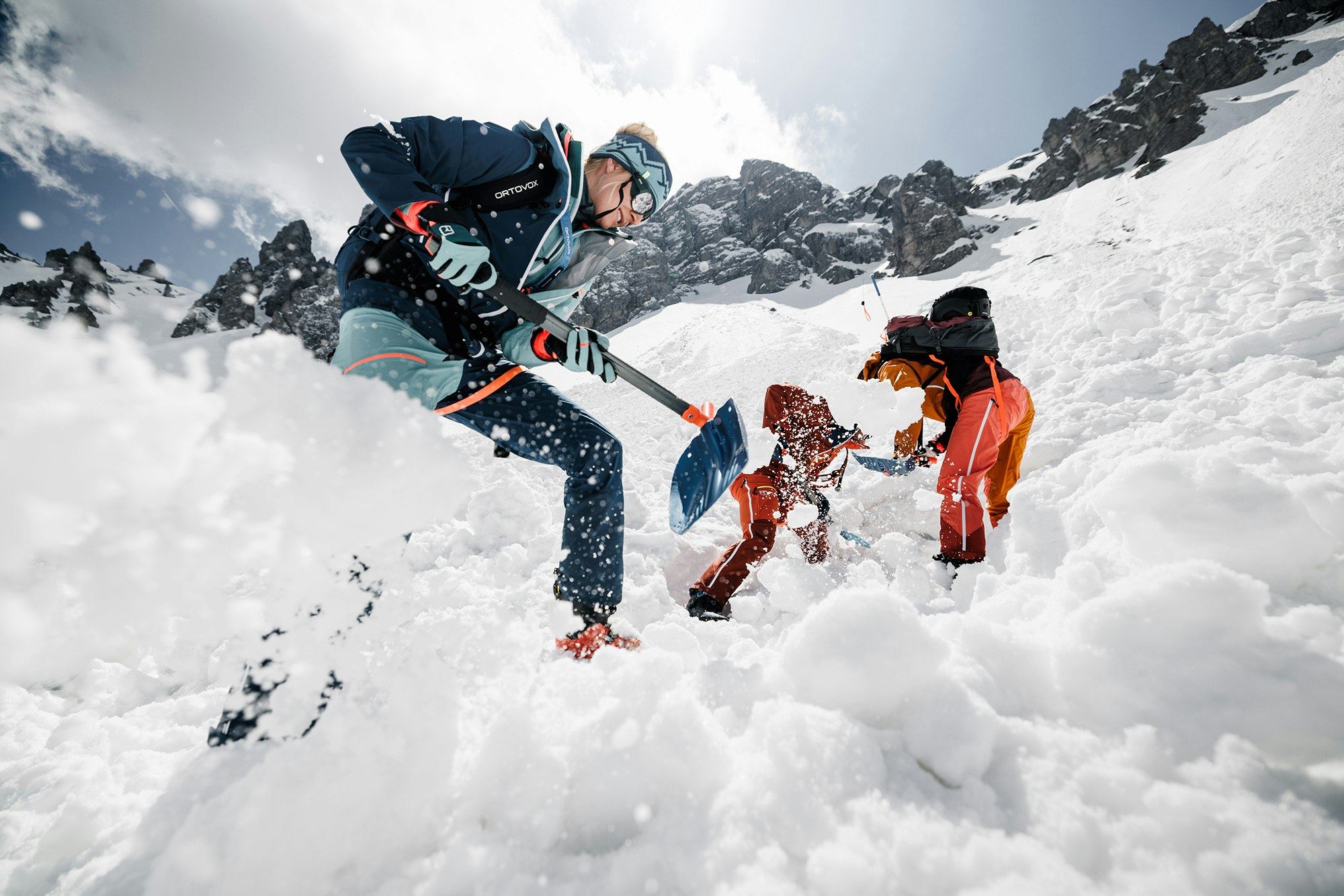
And there’s more. The blade should be a good size, with sidewalls and sharp, serrated front edge, able to carry large quantities of loose snow and cut and move good-sized blocks of compact snow. It should also have ridges to strengthen the structure and metal fastener inserted into the hole in the handle so that when cutting out blocks the handle isn’t overloaded, breaking the pin that holds it onto the blade. The telescopic handle should be long enough to dig effectively, with an oval, triangular or rectangular shaft to make it stiffer lengthways. Lastly, look for one with an ergonomic handle.
Share this article

